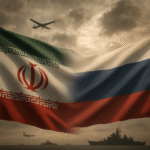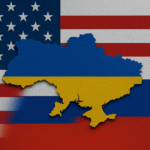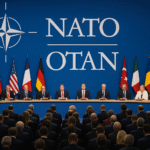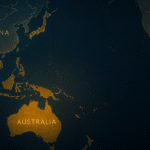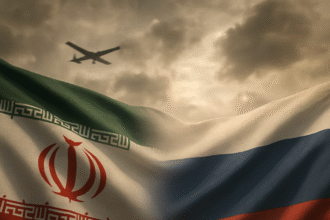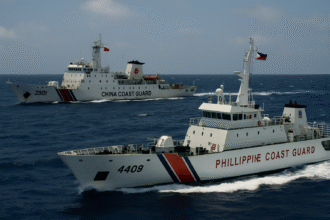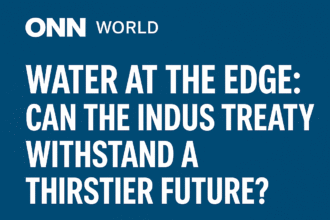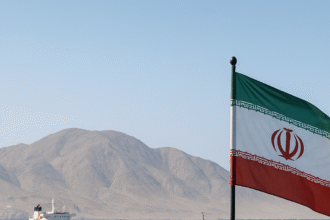The Flashpoint Reignites
In late June 2025, Iran’s parliament passed a provocative bill authorizing the potential closure of the Strait of Hormuz — the narrow maritime chokepoint through which nearly 20% of the world’s oil flows daily.
The trigger? A wave of Israeli airstrikes on Iranian nuclear facilities in Isfahan and Fordow, combined with increased U.S. and French naval deployments in the Gulf. While Iran has previously threatened to block the Strait, the combination of military posturing and geopolitical isolation this time makes the situation far more combustible.
🗣️ “The Strait isn’t just a shipping lane — it’s Iran’s ultimate pressure valve,”
— Former U.S. Naval Strategist, Bahrain-based Fifth Fleet (name withheld)
Why the Strait of Hormuz Matters
At just 21 miles wide at its narrowest, the Strait of Hormuz is the only sea route connecting the Persian Gulf to the open ocean. Nearly 17.3 million barrels of oil per day pass through it, primarily from Saudi Arabia, Iraq, the UAE, and Kuwait.
Even Iran’s own exports rely on this narrow passage.
For oil-importing nations — especially India, China, Japan, and South Korea — a disruption could mean price surges, energy shortages, and a scramble for alternatives. For the West, it’s also a strategic issue: ensuring freedom of navigation in a region shadowed by U.S.–Iran hostility and Chinese quiet diplomacy.
🗣️ “Hormuz is not just a point on the map. It’s a pressure gauge for global risk.”
— Amrita Sen, Energy Intelligence Director, London
A Pattern Repeating: Iran’s Long Game
Iran has repeatedly wielded the Hormuz threat over the past four decades:
- 1984–88: The “Tanker War” phase of the Iran–Iraq conflict saw nearly 400 commercial ships attacked.
- 2011–12: During nuclear sanction standoffs, Iran publicly warned of a blockade, prompting a U.S. naval surge.
- 2019: The IRGC was blamed for mine attacks on tankers and the seizure of a British vessel, escalating UK-Iran tensions.
This time, the stakes are higher. Iran feels encircled — economically by sanctions, diplomatically by isolation, and militarily by regional rivals.
Can Iran Really Shut It Down?
Militarily, Iran has the capability to disrupt Hormuz traffic — if not close it outright. The IRGC Navy possesses:
- Coastal missile batteries along Qeshm and Larak Islands
- Fast-attack boats trained in swarm tactics
- Naval mines capable of crippling tankers
- Drones for maritime surveillance and harassment
However, Iran also exports oil through the same strait — roughly 80% of its own output. Full closure would cripple its economy, anger China (its major buyer), and risk open confrontation with the U.S., which has committed to keeping the waterway open.
🗣️ “Tehran knows the red line. Closure is a last-resort weapon — but targeted harassment, that’s already underway.”
— Commander Farid Zamani (Ret.), Iranian Navy
Global Ripple Effects
A severe crisis in the Strait could shake the global economy:
- ⛽ Oil Prices: Could spike past $130 per barrel
- 📉 Markets: Stocks likely to tumble, especially in energy-sensitive sectors
- 🚢 Shipping Premiums: Insurance and risk surcharges would skyrocket
- 🛰️ Cyber Risks: Potential for digital sabotage targeting port logistics and ship navigation
In anticipation, Saudi Arabia is exploring expanded use of the East-West Pipeline, which bypasses the Strait, and the U.S. has hinted at releasing strategic oil reserves if needed.
🗣️ “Hormuz is a message in itself. When Iran threatens it, it’s not just warning the West — it’s reminding the world that energy security is never apolitical.”
— Dr. Layla Saidi, Maritime Risk Analyst, Gulf Watch Institute
What Comes Next
The world is now watching for signals:
- Will Iran conduct live-fire exercises or missile tests in the Gulf?
- Will the U.S. reinforce the Fifth Fleet or offer convoy protection again?
- Will nations like India and China intervene diplomatically to de-escalate?
The answer will shape more than oil prices — it will determine whether the Gulf returns to uneasy stability or slides toward open conflict.
Iran isn’t just threatening a blockade. It’s sending a strategic reminder:
“You can isolate us, but we can isolate your oil.”
For now, the Strait remains open. But one misstep — one drone too close, one misfire, one mine — and the world’s most valuable waterway could become its most dangerous.


